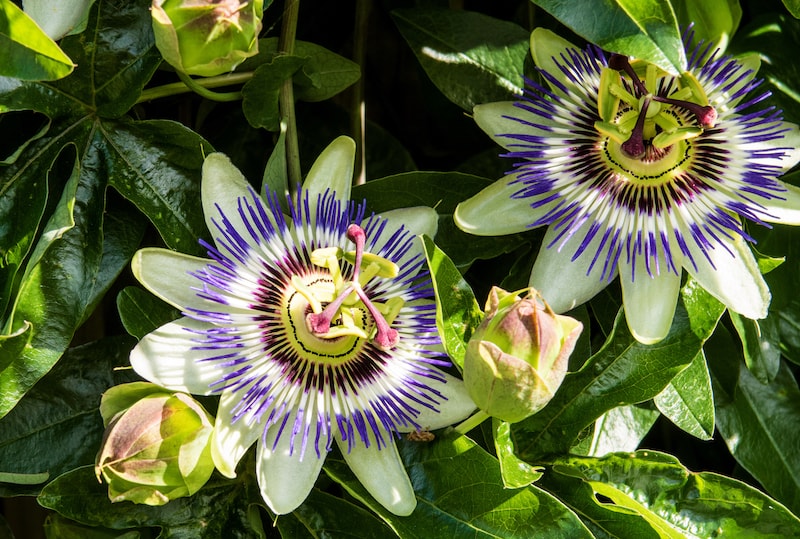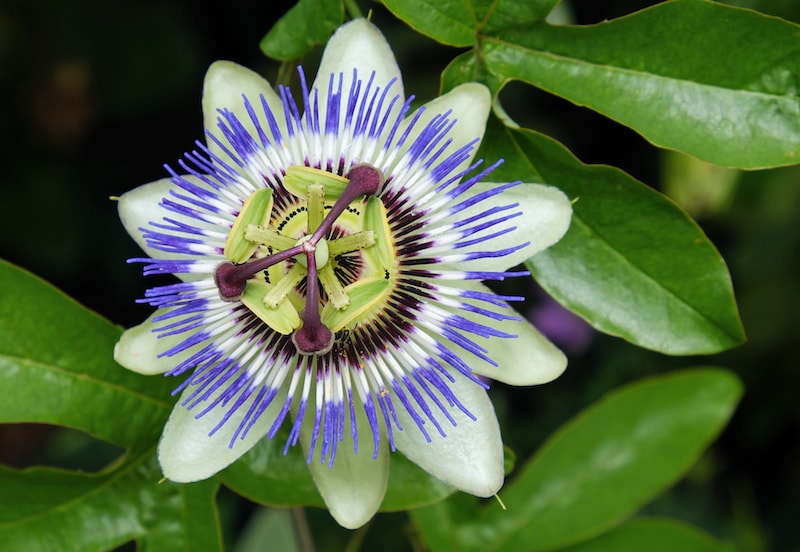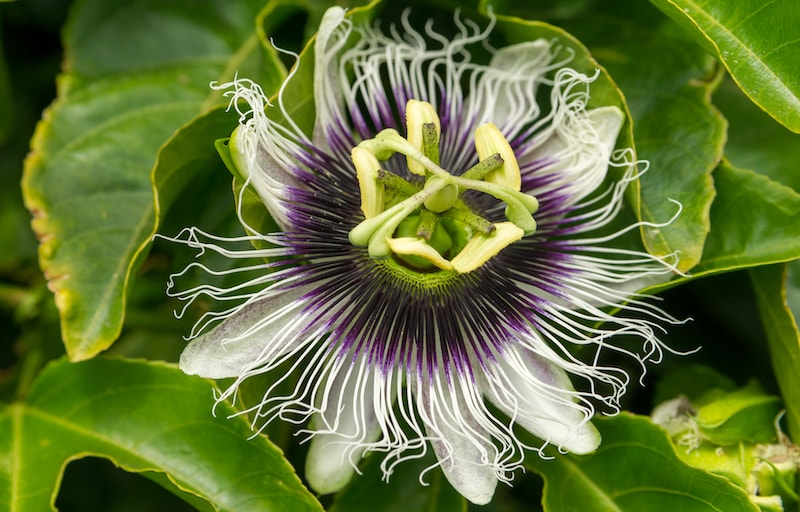The exotic blooms of passiflora, or passion flower as it’s commonly known, are instantly recognisable. These popular climbers have a long flowering season and grow quickly to cover fences, walls and sheds with their striking purple flowers and creeping tendrils.
Available in tender and hardy varieties, you’ll find our full range of passion flower vines in our climbing plants section. When you’ve found your favourite, here are some top tips for planting and growing these spectacular blooms.
Where to plant passion flowers
Passion flowers fall broadly into two categories: hardy and tender. Tender varieties require a warm indoor environment such as a heated greenhouse or conservatory to thrive.
Hardy passion flowers can be grown outdoors in milder parts of the UK. If planting into the ground, wait until May or June when the cold weather has passed. Choose a sunny, south-facing wall with fertile, well-drained soil. Ideal for sunny borders, your passion flower will need some support in order to climb. Train the vine onto a trellis against a wall or fence – it clings with tendrils so won’t need to be tied in once it’s established.
Can you grow passion flowers in containers?

Image: Passion Flower Seeds ‘Caerulea’ from Suttons
Passion flower plants can be grown in containers, but they won’t be quite as vigorous and will need additional feeding and watering to remain healthy. Choose a large pot and incorporate plenty of horticultural grit to improve drainage. Tender varieties will benefit from a loam-based compost and should be kept well-watered in the warmer months. Ease off from watering in winter to prevent their roots from rotting.
Edible varieties such as passiflora edulis can be grown outside, but keep them in containers so they can be brought indoors over winter. Fruiting is more reliable when the plants are grown in a greenhouse or conservatory, although some shade might be necessary to prevent leaf scorch in hot weather.
How to care for your passion flowers

Image: Passiflora Caerulea Plant from Suttons
Water your passion flowers weekly during dry weather and keep a close eye on potted plants, as these may dry out quicker. Passiflora can be left to go dormant over winter and will therefore not need much watering.
In colder parts of the UK, you might need to protect your hardy passion flowers over winter by wrapping the stems in insulating fleece. Applying a mulch of bark or compost around the base of the plant in autumn will give additional frost protection to the roots.
Passion flowers planted in the ground benefit from a spring feed of general fertiliser to encourage growth and flower production. Give containerised plants a liquid feed every four to six weeks between March and October.
How to prune passion flower plants

Image: Shutterstock
Passion flowers are produced on new growth, so prune the old flowered stems back to a healthy bud each spring, and remove any damaged foliage. Passiflora doesn’t need hard pruning unless the plant is very overgrown, and doing so too frequently can weaken the plant and delay flowering.
When grown outside, passion flowers are relatively trouble-free, but keep an eye on young plants for signs of aphid attack. Underwatering may cause flower buds to drop and plants to wilt. Indoors, watch out for pests including red spider mite, whitefly and mealybug.
With a bit of care, passion flowers are very rewarding plants to grow in your garden, conservatory or greenhouse, producing impressively showy blooms from early summer through to autumn. Looking for more climbers? See our full range of clematis plants.
Lead image: Passiflora edulis ‘Frederick’ from Suttons
Last Updated on November 8, 2024 by Suttons Horticultural Team






i planted my passion flower about 2 years ago and only saw 2 or 3 red passion flowers. i have since had it cut back it back considerable ly and is being grown on a round trellis. i have also gave it some 6-6-6 fertilizer {one handful.} Is there anything else i can do to get it to flower? The vegetation on it it is so green but no flowers. Thank you